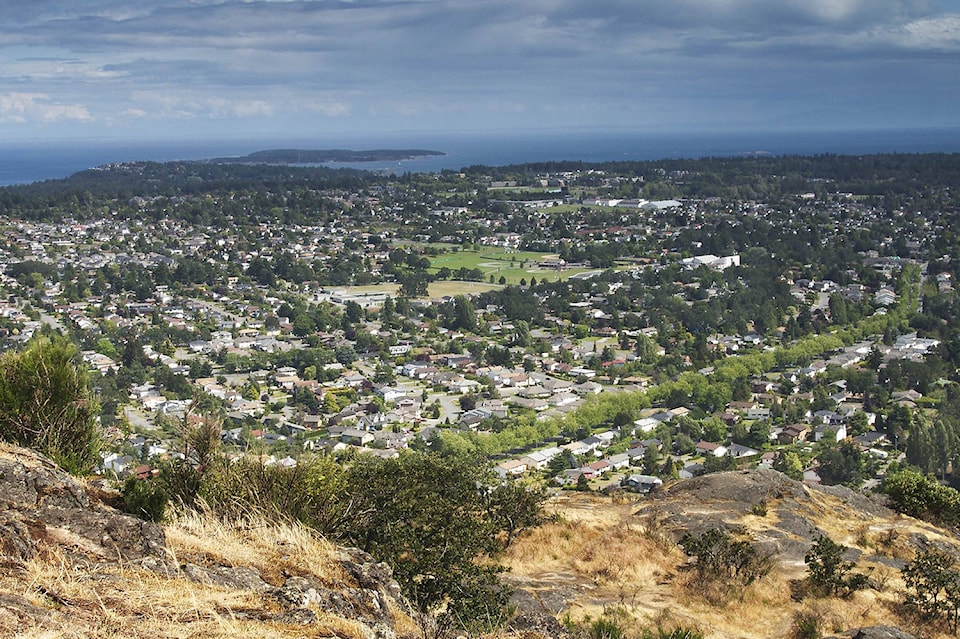A new report finds a substantial portion of Saanich’s population struggles with housing affordability, when the trend-line pointing upwards, especially for home-owners.
More than half of all Saanich renters (51 per cent) and almost half of all Saanich home-owners (49 per cent) in 2016 paid more than 30 per cent of their annual income for housing, according to the draft of Saanich’s 2018 annual report.
Canada Mortgage and Housing Corporation (CHMC) defines all forms of housing as affordable if households spend less than 30 per cent of their before-tax income on housing.
Combined with the latest available census data from 2016, the latest available figures suggest more than 7,100 rental and almost 16,000 privately-owned households in Saanich live in housing considered unaffordable by current standards.
By comparison, 44.5 per cent of rental households and 19.5 per cent of all home-owning households in 2013 spent more than 30 of their family income on housing.
Saanich plans to reduce these numbers by significant margins, according to the draft annual report. The 2036 goal for the share of renters who spend more than 30 per cent of their income on housing is 35 per cent or less, a drop of 16 per cent, for home-owners 15 per cent of less, a drop of 34 per cent.
To this end, Saanich has and continues to pursue a number of initiatives, such as expanding the categories of housing. Saanich, for example, finds itself in the final phases of a garden suite study. Several new housing projects — key among them the re-development of the Nigel Valley — also promise to increase the supply of affordable housing.
RELATED: Early survey results show Saanich ready for garden suites
RELATED: Saanich hub for non-profits will include 16-storey tower
Critics from various quarters including the development community, however, have argued that Saanich has not done enough to improve the supply of affordable housing, which residents consider the most important issue in the community.
RELATED: Community leader calls on Saanich to directly spend money on affordable housing
RELATED: Almost 25 per cent of Saanich residents identify housing as top issue
Looking broadly, rental households in Saanich have always struggled with housing affordability, but the issue has become increasingly acute among home-owners. Compared to 2013, the share of home-owners who spend more than 30 per cent of their income on housing rose by almost exactly 30 per cent.
This increase likely reflects rising real estate prices across the region.
In 2013, the annual average price of a single family home was 664,247 dollars in Saanich East, $557,484 dollars in Saanich West, according to the Victoria Real Estate Board. In 2018, the annual average of a single-family home was $1.045 million dollars in Saanich East, and $807,082 in Saanich West, according to VREB. In other words, real estate prices have risen by almost 60 per cent in Saanich East and 45 per cent in Saanich West.
Consider incomes by comparison. In 2010, the average after-tax family income in Saanich was $84,246. In 2015, the average after-tax income of families was $94,669, according to Statistics Canada. In short, real estate prices have increased significantly, while after-tax incomes have not kept with those increases.
